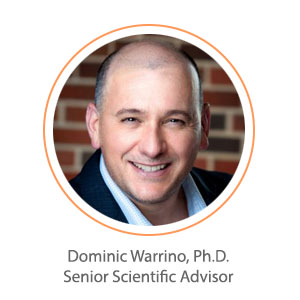Measuring new biotherapeutic modalities such as cellular therapies are not well defined in the regulatory landscape. Currently no white papers or guidelines are available to help navigate the murky waters of quantifying new modalities, which is why the AAPS PK focus group has set a course toward providing the field with the first white paper discussing the regulatory challenges inherent in developing a novel biotherapeutic modality. The FDA unanimously (10-0) recommended approval of Novartis CAR-T cell therapy CTL019 for treatment of relapsed or refractory (r/r) pediatric and young adult patients with B-cell acute lymphoblastic leukemia (ALL). Hopefully the approval of CTL019 will help set the course for future cellular therapies.
biotherapeutic modality. The FDA unanimously (10-0) recommended approval of Novartis CAR-T cell therapy CTL019 for treatment of relapsed or refractory (r/r) pediatric and young adult patients with B-cell acute lymphoblastic leukemia (ALL). Hopefully the approval of CTL019 will help set the course for future cellular therapies.
The traditional methods for measuring large molecules in biological matrix are not applicable for cellular therapies. The method cannot truly be validated without a reference standard. The majority of the performance characteristics defined by white papers and guidelines can’t be performed without a reference standard. Even the platform for measuring cells and cellular interaction, flow cytometry, is traditionally not a GLP-compliant instrument. It gets even more complicated for cellular therapies that are hypothesized to have the patient produce a protein, which can be either in the periphery, intracellularly, surface bound, paracrine or autocrine. To further compound the problem when you infuse or engraft a patient with autologous cells, recovery of those cells is not predictable. The therapeutic cells will traffic to the lungs, kidney, lymph nodes and spleen and might not be measurable in the peripheral compartment, however, may still be an efficacious therapy.
Alternatively, if the therapy is intended to augment the patient’s immune system or bone marrow to boost proliferation of a cell type, how could you possibly follow the traditional PK guidelines? We at KCAS can help. The right knowledge is needed up front – before the project even begins to confirm that our client’s vision and expectations for their assays are reasonable, which is why a feasibility study is paramount to your success (See link to feasibility study blog). In addition to flow cytometry, the pharmacodynamic (PD) assay becomes a focal point of the bioanalytical strategy.
As an illustration of the complexity surrounding these programs, a client is using autologous bone marrow transfected to produce an intracellular enzyme (essentially the treatment is an enzyme replacement). There is no Bioanalytical PK method to be validated, however, an enzyme activity assay (PD assay) developed by an academic lab was heavily relied upon to make critical decisions. We recommended a qualification consisting of accuracy & precision, dilutional linearity, specificity, selectivity and stability for support of GLP murine toxicology studies. As the cellular therapy moves into the clinic ,the client will be looking to KCAS for a recommendations on how to qualify the method. On the surface, it might be as simple as performing a similar qualification in human matrix, but that would be myopic. We plan to work closely with the client, leverage the experience gained from the toxicology testing, and seek recommendations from experts in the field on how best to support PD assays for new modalities such as cellular therapies. To go even further and deeper into the ocean of bioanalytical assays for cellular therapies, I ask you this: If the patient is producing essentially a foreign protein/enzyme, is an anti-drug antibody (ADA) assay needed? Is it needed if the protein is intracellular? The short answer is yes, but we are careful to not to call it an ADA assay, but an immunogenicity assay.
As more and more cellular therapies navigate their way to approval, flow cytometry and PD/biomarker assays will be the bioanalytical focus to measure the efficacy of the drug. KCAS has over 50+ years of flow cytometry experience. Personally, I had the pleasure of working on four ex vivo autologous cellular therapies in the 1990’s.
In the great words of Dr. Carl June, a leader in developing treatments at the University of Pennsylvania, “Now, I have to keep pinching myself to see that this happened,” Dr. June said, his voice breaking with emotion. “It was so improbable that this would ever be a commercially approved therapy, and now it’s the first gene/(cellular) therapy approved in the United States. It’s so different from all the pharmaceutical models. I think the cancer world is forever changed.” (Health Section of NY Times 8/30/17).
I feel you, Dr. June. I feel you.

